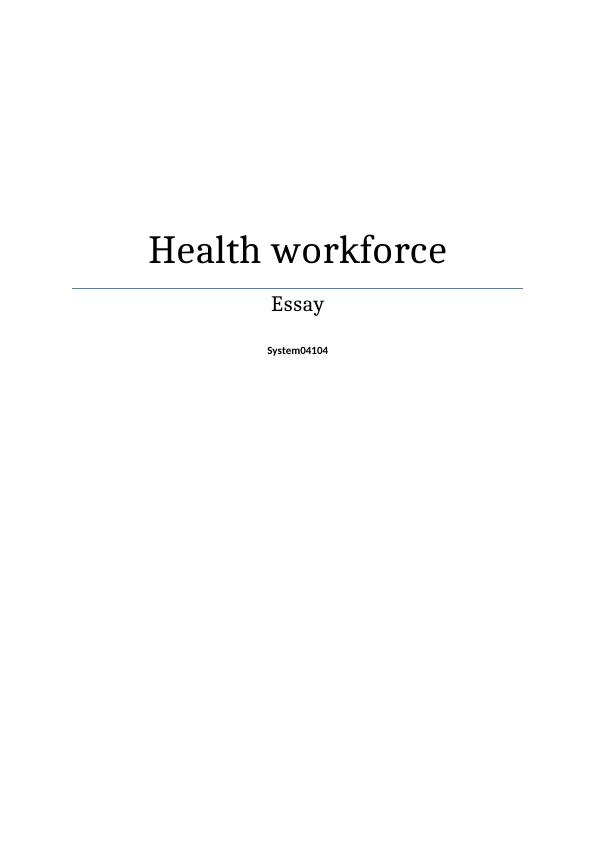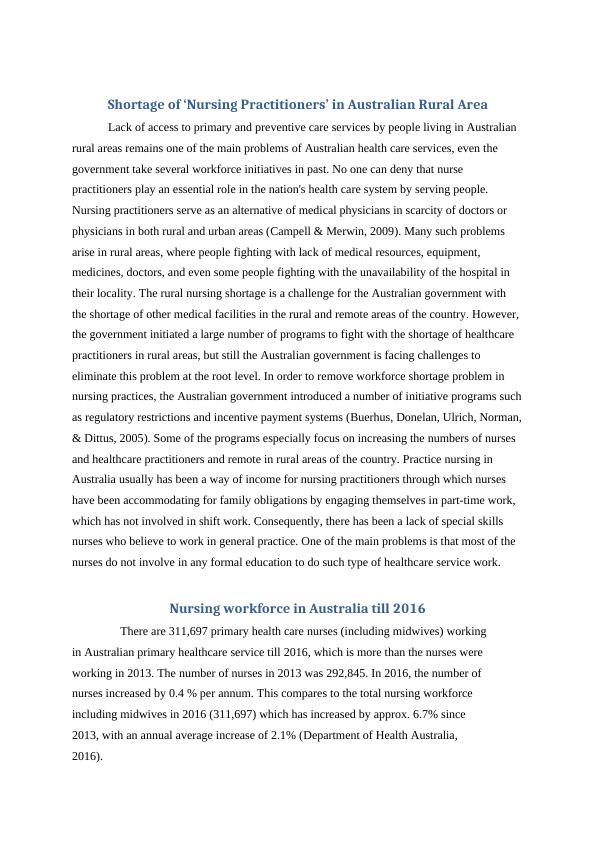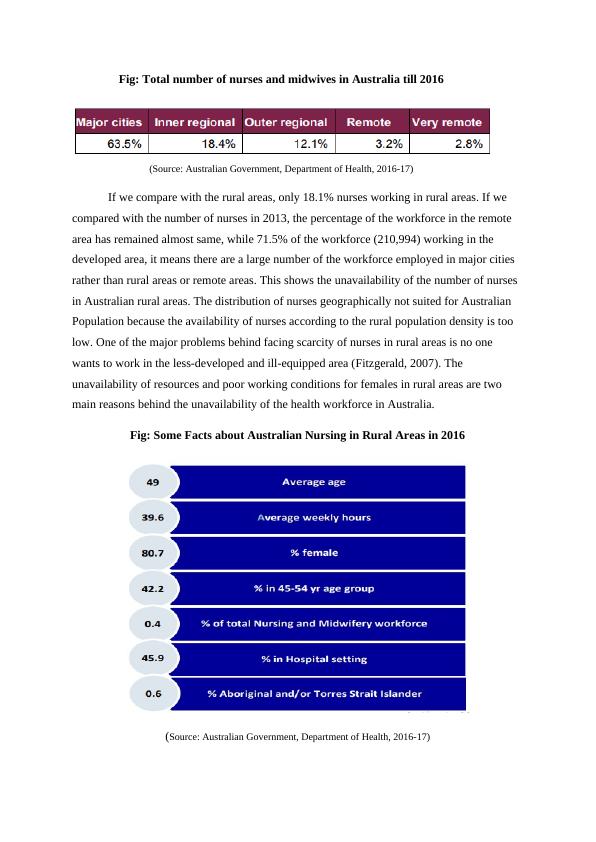Shortage of ‘Nursing Practitioners’ in Australian Rural Area
Write a 2,500-word evidence-based essay on the issues and strategies to address health workforce shortages in rural Australia for a chosen healthcare discipline.
12 Pages3428 Words84 Views
Added on 2023-06-04
About This Document
This essay discusses the shortage of nursing practitioners in Australian rural areas and the challenges faced by the healthcare system. It also suggests strategies to attract people towards rural nursing care services.
Shortage of ‘Nursing Practitioners’ in Australian Rural Area
Write a 2,500-word evidence-based essay on the issues and strategies to address health workforce shortages in rural Australia for a chosen healthcare discipline.
Added on 2023-06-04
ShareRelated Documents
End of preview
Want to access all the pages? Upload your documents or become a member.
Health Workforce Planning
|12
|2430
|21
Health Workforce Planning
|12
|2537
|341
Health Work Force Planning in Australia
|10
|2681
|99
Shortage of Nurses in Australia - Causes, Effects, and Solutions
|11
|2196
|345
Health Workforce in Australia: International Migration and Government Policies
|9
|2247
|72
Healthcare Challenges for Aboriginal Peoples
|19
|1771
|82




